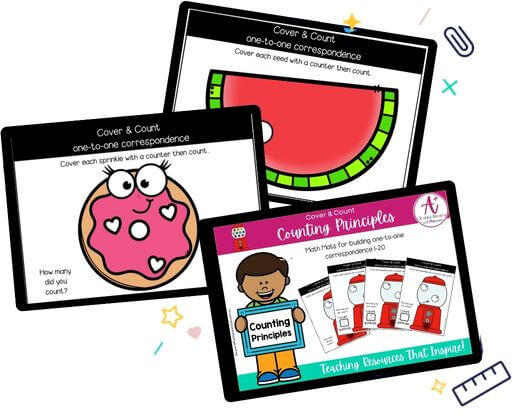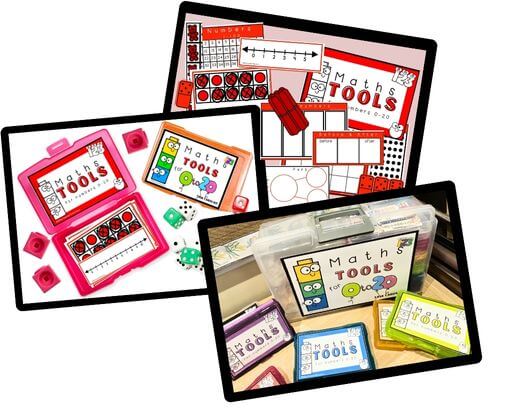2 Colour Counters Activities
Math Manipulatives
If you’ve got a stash of 2-Colour Counters tucked away in your classroom and are eager for exciting ideas and activities to put them to good use, you’ve landed in the perfect spot! This blog post is your guide to unlocking the magic of these math manipulatives, offering eight fantastic ways to rejuvenate your math lessons. And here’s a little tip – these activities are not just for the little ones in Kindy!
But before we dive into the world of 2 colour counters, let’s unveil the secrets behind the essential role of hands-on math materials in crafting an engaging and impactful math learning environment.
The Importance of Hands-On Materials in the Math Classroom
In the dynamic landscape of education, the significance of hands-on materials, for any year level, cannot be overstated, especially in the realm of mathematics. As educators, our mission is to not merely teach mathematical concepts but to instil a deep and lasting understanding in our students. This is where the magic of hands-on materials, like 2-colour counters, comes into play.
Engagement Beyond the Surface:
Hands-on materials engage students on a profound level, reaching beyond the surface of rote memorisation. When students physically interact with manipulatives, they embark on a sensory exploration that stimulates their curiosity and creates a connection between abstract mathematical ideas and tangible experiences.
Bridging the Abstract and Concrete:
Mathematics often involves abstract concepts that can be challenging for students to grasp. Hands-on materials act as bridges, providing a tangible link between theoretical concepts and real-world, tactile experiences. This bridge not only facilitates understanding but also nurtures a love for learning as students witness the magic of mathematics unfolding before their eyes.
Multisensory Learning Experience:
Learning is a multisensory experience, and hands-on materials tap into this principle. When students not only see and hear mathematical principles but also touch and manipulate them, the learning experience becomes richer and more comprehensive. This multisensory approach caters to diverse learning styles, ensuring that every student has the opportunity to absorb and internalize mathematical concepts.
Fostering a Deeper Connection:
The tactile nature of hands-on materials fosters a deeper connection between students and the mathematical concepts they encounter. Instead of passively absorbing information, students actively participate in the learning process, creating a sense of ownership and understanding that goes beyond memorisation.
Making Learning Enjoyable:
The incorporation of hands-on materials adds an element of enjoyment to the learning process. Education is not just about delivering information; it’s about creating an environment where students are excited to explore, question, and discover. Hands-on materials infuse joy into the classroom, turning mathematical challenges into exciting adventures.
Now that we’ve unveiled the magic behind hands-on materials, let’s step into the world of 2-colour counters and explore eight enchanting ways to elevate your math lesson.
Key Ideas With 2 Colour Counters
So, one side is yellow, and the flip side is all red. But these two-colour counters aren’t just for marking numbers or counting in games. Even though they’re pretty simple, these counters are actually pretty handy for all sorts of math concepts, from basic counting to adding up Integers. Here are 5 key ideas behind 2-colour counters to show you just how awesome and useful they can be!
- Visual Representation: Two-Colour Counters provide a visual and tangible way to represent numbers and quantities. The contrast between the yellow and red sides makes it easy to see and understand different values, enhancing visual learning in mathematics.
- Hands-On Learning: These counters offer a hands-on approach to learning mathematical concepts. Students can physically manipulate the counters, promoting engagement and a deeper understanding of counting, addition, and other arithmetic operations.
- Versatility in Activities: Two-Colour Counters aren’t limited to a single use. They can be employed in various activities, such as marking positions on a number line, serving as game pieces, or illustrating mathematical operations. Their adaptability makes them suitable for diverse learning scenarios.
- Conceptual Understanding: Beyond rote memorisation, Two-Colour Counters encourage conceptual understanding. They help students grasp fundamental mathematical ideas, from basic counting to more advanced concepts like Integer addition, by providing a concrete and visual representation of abstract notions.
- Facilitating Group Learning: These counters are excellent tools for collaborative learning. In group settings, students can share and discuss different strategies, enhancing their communication and problem-solving skills. The counters make math more interactive and enjoyable in a social learning environment.
8 Math Concepts To Teach Using 2 Colour Counters
Use two colour counters to teach a range of mathematical understandings.
2 Colour Counter Activities
We’ve organised our 2 colour counter activities by math concept, click the images below to start downloading the resources.
Explore tags
Math Manipulatives Activities

Counting Principles - one-to-one correspondence

Math Manipulatives - Student Tool Kits
Can't find what you're looking for?
Send us a request! Use this form to request a resource. Please give details of the learning area, topic, year level, curriculum links. We’ll be happy to take a look to see if we can fit it in. Unfortunately a request does not guarantee we will be able to make it!
"*" indicates required fields
